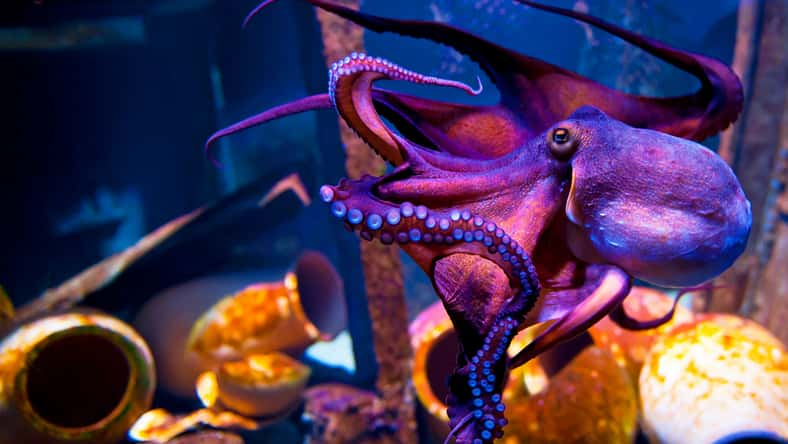We Have More In Common With Mollusks Than Meets The Eye: In A Novel Study, Scientists Mapped The Neural Activity of The Octopus Visual System And Found Shocking Similarities To Humans

With their obtuse heads, elongated bodies, and eight tentacles, octopuses do not resemble humans whatsoever. But, according to a new University of Oregon study, we have more in common with the mollusks than meets the eye.
About 70% of an octopus’s brain is dedicated to its vision. Yet, it was only recently that scientists began to understand how these sea creatures view their underwater environment.
In this novel study, neuroscientists recorded the neural activity of an octopus’s visual system for the very first time. By observing the octopus’s neural activity in response to both light and dark spots in varying locations, the team was able to create a map of the creature’s visual field.
Interestingly, this neural activity map looks remarkably similar to what is observed in human brains. This is in spite of humans and octopuses last sharing a common ancestor approximately 500 million years ago and the marine animals’ nervous systems evolving independently afterward.
“Nobody has actually recorded from the central visual system of a cephalopod before,” said Christopher Neill, a neuroscientist at the University of Oregon.
While octopuses are not normally used as models for vision understanding, that didn’t stop the researchers from becoming intrigued with the animals’ strange brains.
Just last year, the team published a paper identifying various categories of neurons located in the octopus optic lobe. This paper, joined by the researcher’s most recent inquiry, works to provide a well-rounded picture of octopuses visual processes.
“These papers provide a nice foundation by elucidating the different types of neurons and what they respond to– two essential aspects we’d want to know to start understanding a novel visual system,” Neill explained.
In their latest study, the researchers analyzed how octopus visual system neurons responded when dark and light spots traveled across a screen. The team used fluorescent microscopy to watch the neurons’ activity as they responded and observed how these reactions differed depending on where the light and dark spots appeared.

Liaurinko – stock.adobe.com – illustrative purposes only
“We were able to see that each location in the optic lobe responded to one location on the screen in front of the animal. If we moved a spot over, the response moved over in the brain,” Neill recalled.
This type of map is similarly found in human brains for various senses, such as touch and vision. The locations of specific sensations have also been connected to distinct regions in the brain.
It is a decently complex evolutionary process that other animals, such as reptiles, do not have. So, even though the team hoped to observe this kind of visual map in their work, it was not a given– making this discovery all the more exciting since it had never been observed before.
Still, there was one big difference between the octopus’s visual system versus the human visual system: the octopus neurons responded quite strongly to big dark spots and small light spots.
Neill believes this reaction may be tied to specific factors present in the underwater environment, which octopuses are constantly exposed to and expected to navigate. Predators, for instance, may show up as looming, dark shadows; meanwhile, nearby food might appear as tiny bright spots.
Following this study, the team hopes to expand on their findings to determine how the octopus brain reacts to more intricate images, including things that the creatures really encounter in their environment.
To read the researchers’ complete findings, which have since been published in Current Biology, visit the link here.
If true crime defines your free time, this is for you: join Chip Chick’s True Crime Tribe
The Last Time Her Sister Saw Her, She Gave Her A Ride To The School Bus Stop, And Then She Vanished
Sign up for Chip Chick’s newsletter and get stories like this delivered to your inbox.
More About:Science





